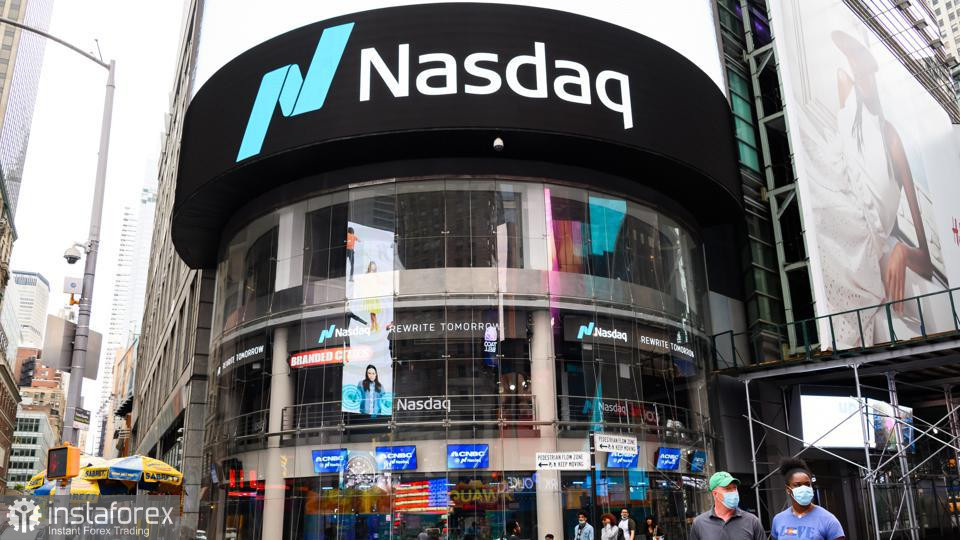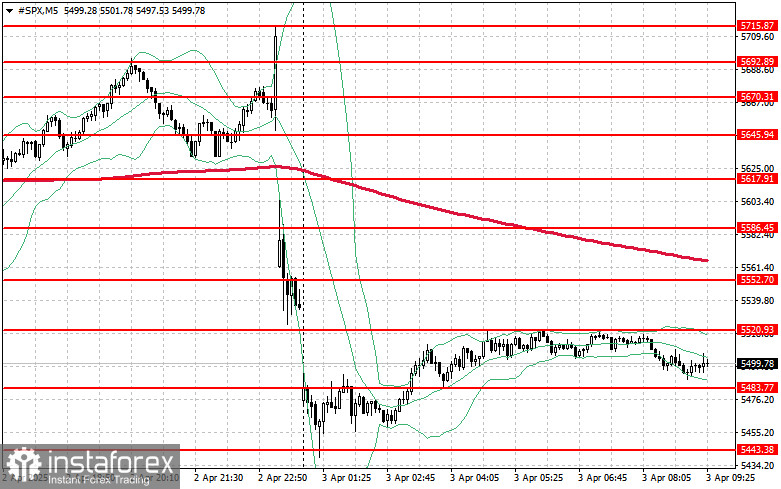At the close of yesterday's regular session, U.S. stock indexes ended in positive territory. The S&P 500 rose by 0.67%, the Nasdaq 100 gained 0.87%, and the Dow Jones Industrial Average increased by 0.56%. However, Donald Trump's tariffs quickly sent index futures plunging during post-session trading.

The introduction of tariffs, which Trump called the key to America's long-term prosperity, triggered a collapse in stocks that had rallied in hopes of a less aggressive tariff policy. S&P 500 futures dropped more than 3.5%, while Nasdaq 100 contracts fell by 4.5%, marking new yearly lows.
Trump announced a baseline 10% tariff on all exporters to the U.S., with additional duties for approximately 60 countries. This includes significantly higher rates for some of the U.S.'s top trading partners, such as China, the European Union, and Vietnam.
This development ended a three-day rally in the S&P 500 index, as hopes for a more moderate tariff plan were dashed. Traders across asset classes must now brace for what promises to be a grueling period of trade negotiations.
The White House stated that steel and aluminum imports would not be subject to reciprocal tariffs—offering some relief to domestic buyers already paying 25% duties on key metals used in everything from cars to dishwashers.
Shares of companies in sectors most vulnerable to the new round of tariffs fell sharply at the end of New York trading. Nike Inc., Gap Inc., and Lululemon Athletica Inc. dropped at least 7%. Chipmakers like Nvidia Corp. and Advanced Micro Devices Inc. also plunged, as did multinationals such as Caterpillar Inc. and Boeing Co.
Treasury Secretary Scott Bessent urged U.S. trade partners not to retaliate against Trump's new set of tariffs, warning that the U.S. could respond even more aggressively.
"If you don't retaliate, this will be the ceiling," Bessent said.
This will likely slow global trade and drive prices higher, reducing corporate profits and raising consumer end costs—potentially triggering another wave of inflation. Many experts believe retaliatory measures from the affected countries will worsen the global economic situation.
This could lead to a prolonged selloff in risk assets over the coming days or weeks before markets reach attractive levels for renewed buying.

S&P 500 Technical Outlook:
The downtrend continues. Today, buyers' main goal is to break through the nearest resistance at $5,520. Doing so could extend the rebound and open the way toward $5,552. Regaining control over $5,586 is also a top priority for bulls, as it would reinforce their position.
If risk appetite declines and the index moves lower, bulls must defend the area around $5,483. A breakout below this level would quickly push the instrument toward $5,443, possibly moving further to $5,399.





















